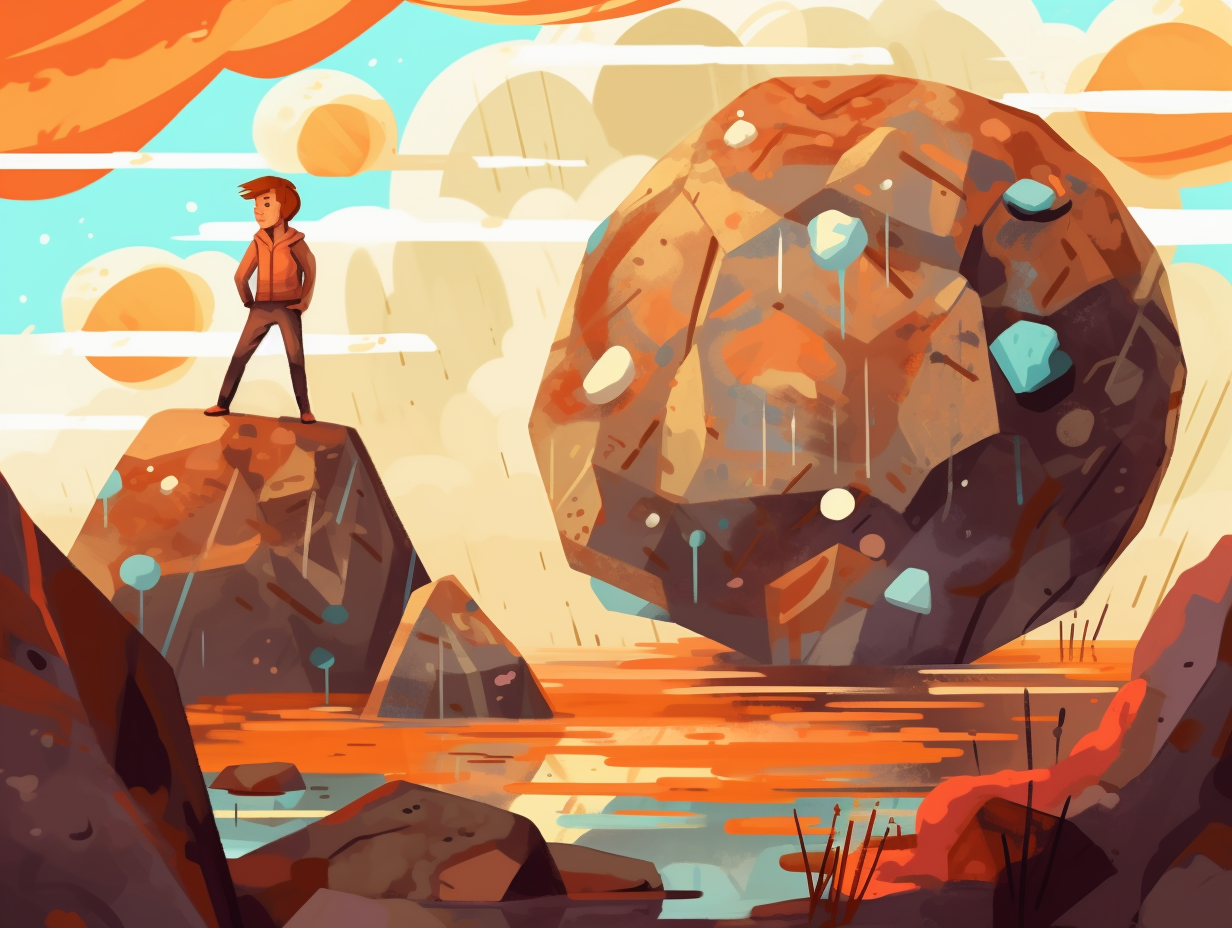Discover the Wonders: Top 13 Exciting and Entertaining Rock Cycle Fun Facts!

1. House Hunters: Igneous Rock Edition
Who knew that the Earth's crust was also into interior and exterior design? Welcome to House Hunters: Igneous Rock Edition: Igneous rocks can be categorized into intrusive rocks formed inside the Earth's crust, like granite and diorite, and extrusive rocks formed outside of it, such as basalt and obsidian. Bonus points for pumice, which rocks a holey look thanks to gases trapped in ejected magma.
Source => nationalgeographic.org
2. Cool Cooling: Igneous Rocks' Secret
What's cooler than being cool? Igneous rocks, of course! They've got a split personality that would make Dr. Jekyll and Mr. Hyde jealous: Intrusive, or plutonic, igneous rocks take it slow and steady, cooling underground and forming large mineral grains for a coarse-grained texture. Meanwhile, their extrusive, or volcanic, siblings live life in the fast lane, cooling quickly above ground for a fine-grained, glassy finish. So remember: Whether you’re a rock star or a rock, how you cool down really defines your groove!
Source => usgs.gov

Did you know metamorphic rocks like marble and gneiss transform under extreme heat and pressure, creating incredible geological formations without melting? Discover the marbelous world of these rock stars!
=> Fun Facts about Metamorphic-Rocks
3. Sedimentary Rocks: Nature's Layer Cake
Whoever said rock stars don't have layers clearly missed this geological gem: Sedimentary rocks are formed through the nitty-gritty process of weathering, transportation, and deposition, giving them those cool textures and patterns we can't help but gawk at.
Source => columbia.edu
4. Earth's Crust: The Ultimate Wardrobe Change
Talk about a rocky road trip: our Earth's crust is constantly transforming and upgrading its geological wardrobe! The metamorphic magic trick? Temperature, pressure, and chemical changes are the three stylist superstars responsible for igneous, sedimentary, and metamorphic rock formations – which means you could be standing on the fabulous result of natural heat, pressure, and chemistry.
Source => volcano.oregonstate.edu

5. Fossil-Filled Sedimentary Stand-Up
Why couldn't the sedimentary rock make a decent comedian? It had too many fossils stuck in its material! But seriously: sedimentary rocks can preserve ancient plant and animal remains as fossils, offering a glimpse into Earth's history and making them a treasure chest for geologists to unravel the mysteries of the past.
Source => pubs.usgs.gov
6. Magma: The Rock Chameleon
Magma's got a serious case of split personality: sometimes it's rhyolite, sometimes it's granite, and other times, it's a shiny obsidian that would make any ancient arrowhead proud. This liquid rock chameleon can create a variety of igneous rocks depending on how fast it cools: slow-cooling magma results in granite or rhyolite, while rapid cooling can give birth to glassy obsidian with no visible individual crystals. No wonder geologists have a rocky time keeping up!
Source => nationalgeographic.org
7. Sedimentary Rocks: Earth's Life Story
Next time you're feeling a little sedimentary on your couch, remember this: Sedimentary rocks hold the secret history of Earth's life, as fossils within their layers reveal the evolution of plants and animals over millions of years.
Source => amnh.org
8. Metamorphic Makeover: It's Not Just Heat!
You know what they say: "It's not the heat, it's the pressure, differential stress, and fluids that can cause a serious case of metamorphosis!" : Metamorphism in rocks isn't just about temperature changes; it's also influenced by factors like pressure, differential stress, and the presence of fluids, leading to alterations in mineral assemblage and texture, and creating new types of metamorphic rocks.
Source => www2.tulane.edu
9. Diamonds: Carbon's High-Pressure Glow-Up
Here's a gem of a secret, darlings: diamonds are actually just carbon's way of handling a little too much pressure! Funnily enough, they're formed deep in Earth's mantle under extreme heat and stress, as carbon atoms find solace in their dazzling crystallized form. But don't let their glamorous façade fool you: they're not as rare as red-carpet appearances but rather quite abundant in our planet's mantle, making guest appearances on the surface through volcanic activity.
Source => webphysics.iupui.edu

10. Rock Cycle: Geological Musical Chairs
It's like musical chairs on a geological scale, where rocks don't want to remain in the same spot for too long: The three main types of rocks – sedimentary, igneous, and metamorphic – can all be transformed into one another through the rock cycle, with sedimentary rocks becoming metamorphic through heat and pressure, igneous rocks turning into sedimentary ones via weathering and erosion, and metamorphic rocks reshaping into igneous formations with just enough heat and pressure.
Source => britannica.com
11. Intrusive vs. Extrusive: The Crusty Tussle
You may have heard of people being called "intrusive" and "extrusive," but did you know rocks can be like that too, just less annoying?: Intrusive igneous rocks, like granite and diorite, form inside Earth's crust from molten hot material that slowly cools over thousands or millions of years, while extrusive igneous rocks, like basalt and obsidian, form outside the crust from lava cooling hastily due to exposure to air or water.
Source => nationalgeographic.org
12. Rock Party: Crumbling and Dissolving
Rocks are quite the party animals: they love to crumble and dissolve when they let loose with their pals, water and temperature changes! These lively geological interactions come in two flavors: mechanical weathering, which gets the rocks physically broken down through water, ice, and temperature changes, and chemical weathering, which remixes their molecules and even lets them dissolve through the creation of weak acids. So next time you bear witness to the earth's never-ending geological dance, remember these weathering moves so you too can groove along with the rock cycle!
Source => nationalgeographic.org
13. Record-Breaking Rock Layers: Thanks, Mt. St. Helens!
Hold onto your rockers, geology enthusiasts: the eruption of Mount St. Helens in 1980 formed a 25-foot-thick rock unit composed of thousands of sedimentary layers in just a few hours, proving that catastrophic events like volcanic eruptions and floods sure know how to rock the world record for fastest construction crew!
Source => answersingenesis.org
Related Fun Facts




















